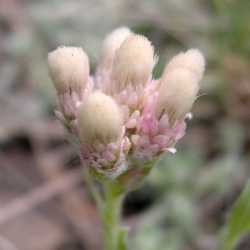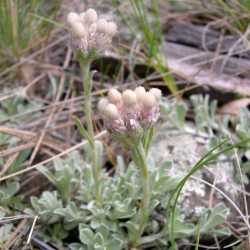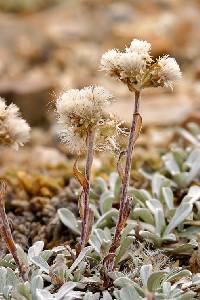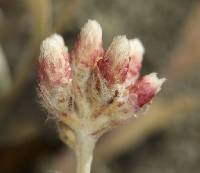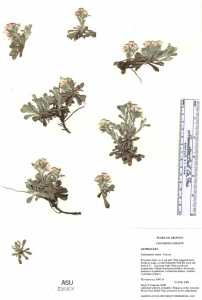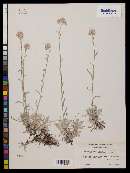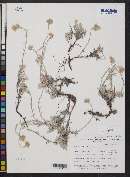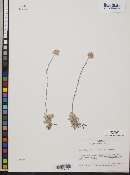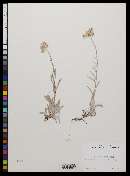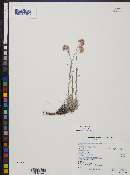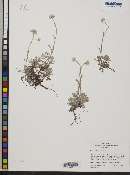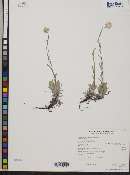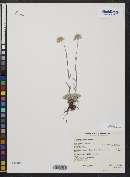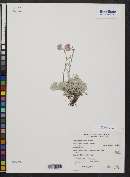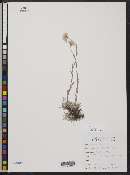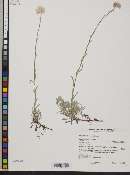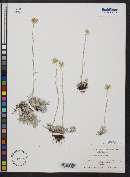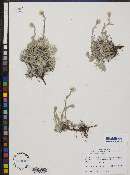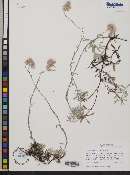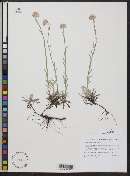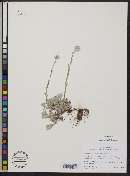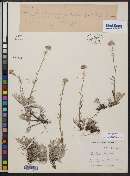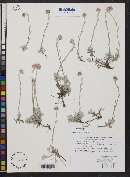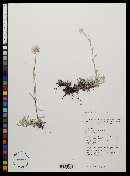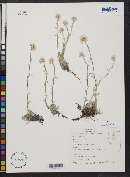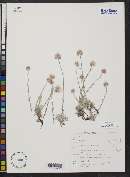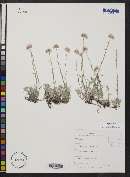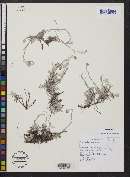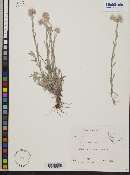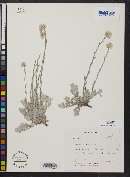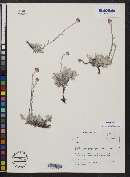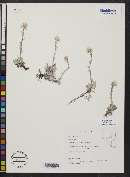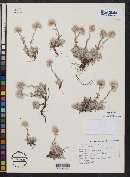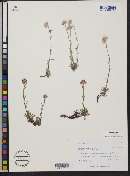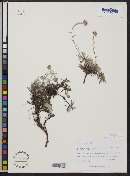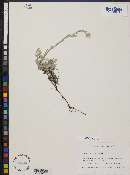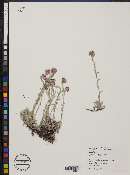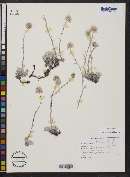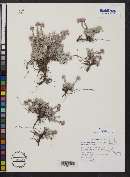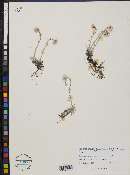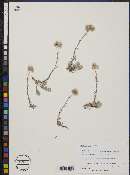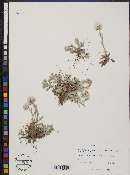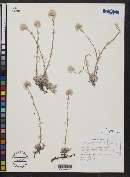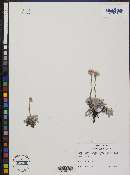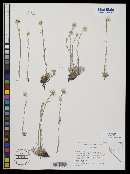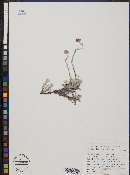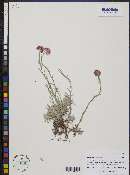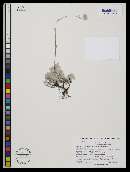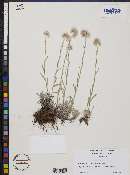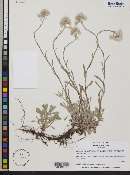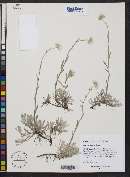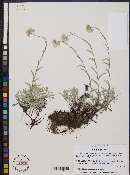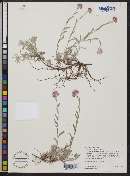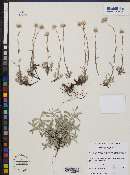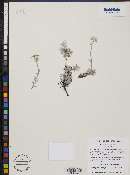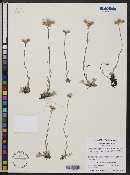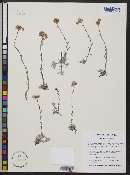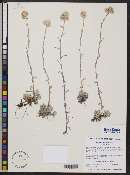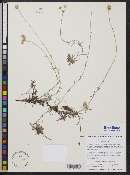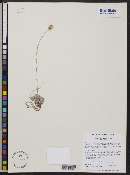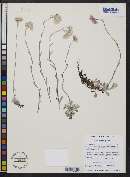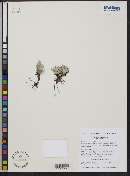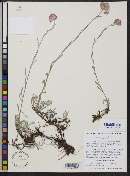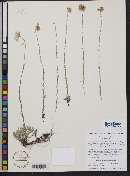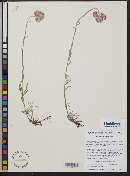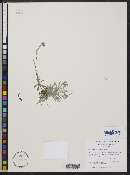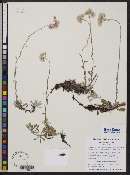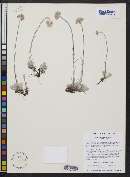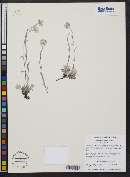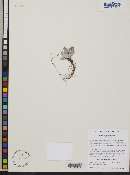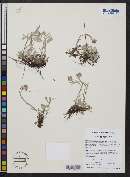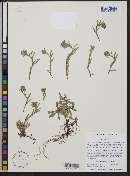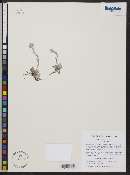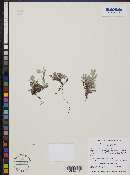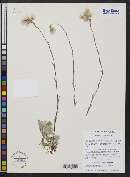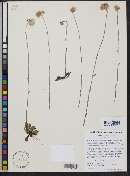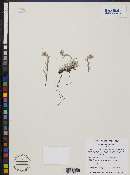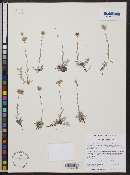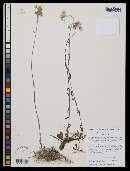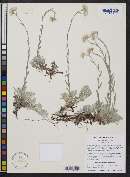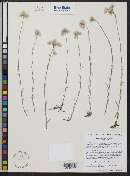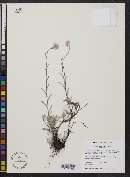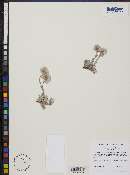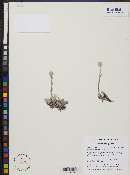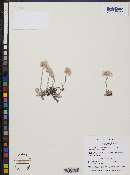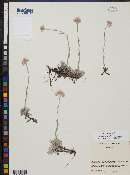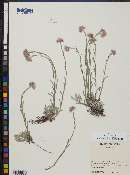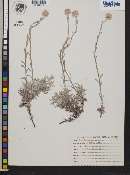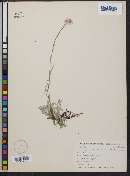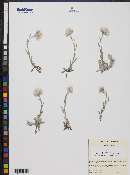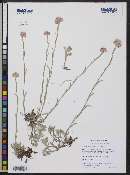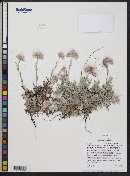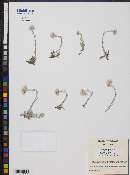Antennaria rosea
|
|
|
|
Family: Asteraceae
Rosy Pussytoes, more...rose pussytoes
|
Gynoecious (staminate plants uncommon). Plants 4-30 cm. Stolons 1-7 cm. Basal leaves 1-nerved, 8-40 × 2-10 mm, spatulate, oblanceolate, or cuneate, tips mucronate, faces usually gray-pubescent, adaxial sometimes green-glabrous. Cauline leaves linear, 6-36 mm, usually not flagged (apices acute to subulate or with lanceolate flags). Heads 3-20 in corymbiform arrays. Involucres: staminate unknown; pistillate 4-10 mm. Phyllaries distally brown, cream, gray, green, pink, red, white, or yellow (apices acute or erose-obtuse). Corollas: staminate unknown; pistillate 2.5-6 mm. Cypselae 0.7-1.8 mm, glabrous or papillate; pappi: staminate unknown; pistillate 3.5-6.5 mm. 2n = 42, 56, (70). Antennaria rosea is the most widespread Antennaria of North America, occurring in dry to moist habitats from near sea level to the alpine zone. The A. rosea polyploid agamic complex is one of the more morphologically diverse complexes of North American Antennaria. It occurs from the western cordillera of North America from southern California, Arizona, and New Mexico north to subarctic Alaska and east to Greenland and, disjunctly, in the Canadian maritime provinces, eastern Quebec, and immediately north of and adjacent to Lake Superior (R. J. Bayer et al. 1991). Antennaria chilensis (including A. chilensis var. magellanica) is a Patagonian endemic that morphologically fits within the circumscription of A. rosea and may well be an amphitropical disjunct member of the complex. Antennaria rosea is taxonomically confusing; it includes agamospermous microspecies that have been recognized as distinct taxonomic species. Morphometric and isozyme analyses have demonstrated that the primary source of morphologic variability in the complex derives from six sexually reproducing progenitors, A. aromatica, A. corymbosa, A. pulchella, A. microphylla, A. racemosa, and A. umbrinella (R. J. Bayer 1989b, 1990b, 1990c). Additionally, three other sexually reproducing species, A. marginata, A. suffrutescens, and A. rosulata, may have contributed to the genetic complexity of the A. rosea complex (Bayer 1990b). Here, four reasonably distinct subspecies are recognized within the complex.
FNA 2006, Jepson 1993 Duration: Perennial Nativity: Native Lifeform: Forb/Herb General: Dwarf perennial herbs to 30 cm tall, with female flowers only, staminate plants uncommon, herbage tomentose, plants stoloniferous, often mat-forming. Leaves: Leaves mostly in a basal rosette, to 36 mm long, 1-nerved, obovate, spatulate, or cuneate, upper faces gray pubescent, undersides glabrous, margins entire, caulescent leaves reduced. Flowers: Small pistillate heads, whitish, staminate unknown, involucres, 4-10 mm long, strongly graduated, phyllaries wide, acute, distally white, pink, brown, green, red, or yellow, heads borne in corymbiform arrays or 3-20. Fruits: Achenes small. Pappus of the pistillate flowers of copious capillary bristles, pappus of the staminate flowers unknown. Ecology: Found in dry to moist habitats in woods, rock barrens, ridges, and weadow edges, from 0-15,000 ft (0-4572 m). Distribution: Occuring from the western cordillera of North America from southern California, Arizona, and New Mexico north to subarctic Alaska and east to Greenland and, disjunctly, in the Canadian maritime provinces, eastern Quebec, and immediately north of and adjac Notes: Pussytoes! Not to be confused with Antennaria rosulata, A. rosea is not present in Kearney and Peebles or other common older texts for the southwest region. Look to FNA for a definitive source. Jepson notes that this species is highly variable and the subspecies intergrade freely. Ethnobotany: This roots of this species were chewed and smoked as a stimulant and to increase virility, and the leaves were sometimes chewed by children for their flavor. Etymology: Antennaria is from Latin antenna, because the flowers look like insect antennae, while rosea means rose colored. Synonyms: Antennaria microphylla Editor: LCrumbacher 2011 |


